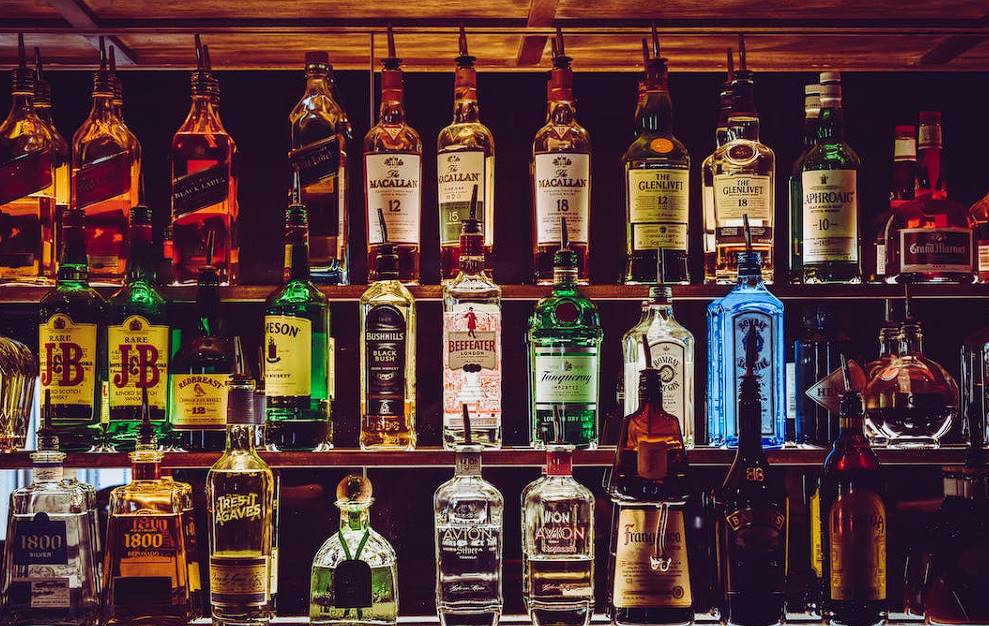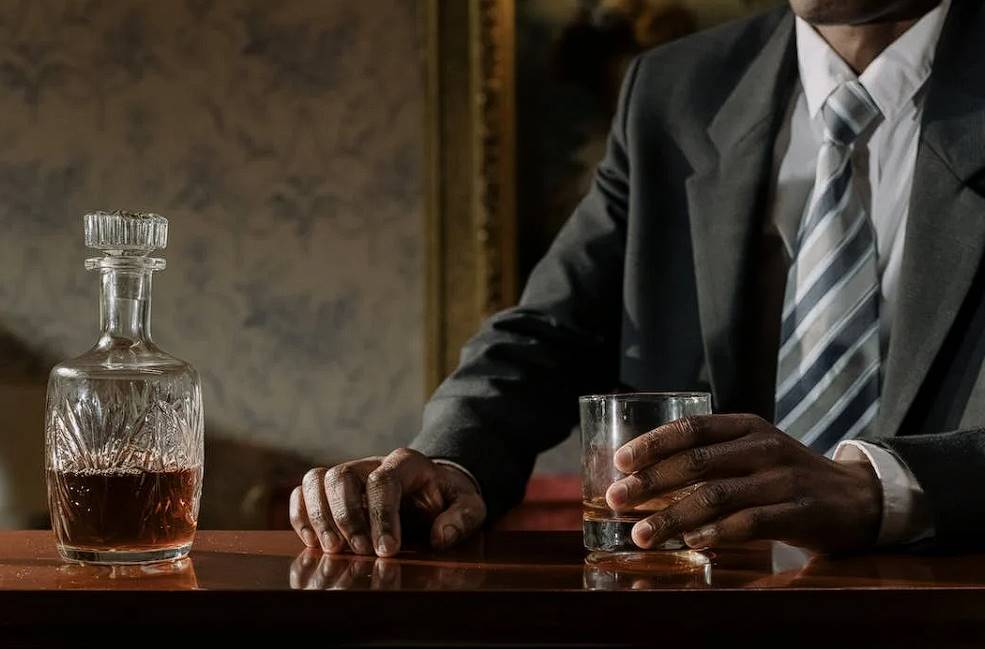Whisky has been appreciated by people all around the world for ages. Alcohol are made by distilling fermented grains like barley, corn, rye, or wheat and ageing them for at least three years in an oak barrel.
When whisky is aged in a barrel, it absorbs the barrel's flavour, aroma, and colour. However, the whisky industry has long argued over whether or not the spirit's alcohol level rises as it ages in barrels. Are you looking for a Melbourne brewery or distillery that is affordable and professional? Look no further than Tar Barrel in Mornington, Victoria. We are experts in the brewing and distilling industry, and we can help you create the perfect drink for your customers.
A school of thought says whisky gets more inebriating as it ages. This idea has sparked numerous arguments among whisky experts and led to several misconceptions among whisky fans.
Alcohol Percentage in Whisky and Its Relevance
Whiskey's flavour, aroma, and strength are all influenced by its alcohol level, generally known as its alcohol by volume (ABV). The ABV indicates the amount of alcohol in a bottle of whisky as a percentage of the total volume. Whiskies typically range from 40% to 50% ABV, though this might change based on factors including the whiskey's origin, how it was distilled, and how long it was aged.
The whiskey's alcohol percentage has a major impact on its taste and feel. Greater alcohol by volume (ABV) means a richer flavour and more potent scent in the whisky. Whisky with lower alcohol by volume (ABV) will be less intense in flavour and aroma. Whisky with higher alcohol by volume (ABV) feels dense and thick on the tongue than whisky with a lower ABV.
A whiskey's strength can be judged in part by its alcohol concentration. Whisky with higher alcohol by volume (ABV) will have a greater impact on the consumer. Knowing the alcohol content of whisky is essential for moderation and consuming the right amount for your tolerance.
In general, whiskey's taste and flavour are greatly influenced by its alcohol concentration. Therefore, it's crucial to consider how the whisky's age will affect the whiskey's flavour, fragrance, texture, and strength.
What Exactly Is Barrel Ageing, and Why Is It So Crucial?
"Barrel ageing" means ageing alcohol in a wooden barrel. What you might need to learn, though, is that ageing alcohol in barrels is a tradition that dates back thousands of years. And mastering the science of barrel ageing is a challenging feat.
Barrel ageing, as the name suggests, is the process by which whisky and other spirits like bourbon and rum are matured in a wooden barrel. This symbiotic interaction affects the scent and flavour of the final product.
Why Does Ageing Take Place in Barrels?
Various conditions, including the ambient temperature and humidity, dictate how long the raw components (water, barley or another grain, and yeast) are matured in a wooden barrel. The wood eventually breaks down, allowing vapour to escape and incorporating oxygen into the ageing process. This influx and ebb is a continuous phenomenon.
Wood facilitates airflow within the barrel and serves as a natural filter. Charring or toasting the barrels used for ageing spirits removes the wood's natural oils and leaves behind a charcoal covering that functions as a filter, sucking out any off-putting flavours. While the charcoal extracts off-putting flavours, the wood imparts its own, combining vanilla, tannins, and the signature smoky flavour of spirits like whisky.
What Kinds of Barrels Are Used for Ageing?
The type of barrel describes the species of wood used and whether or not it is a fresh barrel. The final spirit's flavour is partly determined by the type of wood used in the distillation process.
The choice of the barrel extends beyond the wood species to include whether it is new or used. Wooden barrels can be used for multiple ageing cycles because the spirit's flavour is absorbed into the wood. Distillers that want to find the perfect flavour profile for their whisky can express their individuality by letting the spirit age in repurposed barrels.
How Ageing Is Affected by the Changing Seasons
Let's explore the uncharted territory of how the passing of time varies with the seasons and our favourite liquid gold.
Whisky in a barrel responds to increasing temperatures by dancing more vigorously with the wood. In what way? An unprecedentedly aromatic and flavorful whisky. Keep your caps on; the heat may also increase evaporation, resulting in a stronger alcohol and flavour concentration.
The whisky then has time to relax in the barrel as the temperature drops over the fall and winter months. As the liquid cools, it contracts and has less surface area to contact the wood. Because of this, the fragrances and tastes are diluted. Don't panic, fall enthusiasts; this only means you can sip on a smoother, less fiery whisky.
Let's get cosy for the season, shall we? The liquid in the barrel contracts further as it cools. Because of this, fewer flavours and smells can be recovered from the wood. However, whisky that has been aged for longer tends to be more refined and subtle. So let's raise a glass of winter whisky to a relaxing evening inside.
At long last, spring has arrived with all its colourful vigour. The whisky expands as the temperature rises, increasing its contact with the wood and releasing more aromas and flavours.
The wood inside the barrel might expand and contract due to seasonal temperature and humidity changes. As a result, the whisky is forced to migrate in and out of the wood, which further alters its scent and taste.
As a result of the seasons' mystical influence, each bottle of matured whisky has its character and flavour.
Effects of High Heat and Low Humidity
Whisky's final flavour and aroma are heavily influenced by the environment in which it was aged, especially temperature and humidity. Consequently, each bottle of aged whisky can develop its distinct flavour and aroma profile due to the ageing process, which is why it is a difficult and diverse endeavour.
When it comes to whisky, temperature is a major factor. The expansion of the liquid at higher temperatures increases its contact with the wood, producing more complex flavours and fragrances. On the other hand, whisky aged at lower temperatures develops a more subtle flavour and texture.
Humidity can also have a major role in slowing down or speeding up the ageing of whisky. Increased opportunities for contact between the wood and the liquid result from its expansion and contraction due to high humidity. This process can impart new scents and flavours into the whisky. Low humidity, on the other hand, might speed up the evaporation process, resulting in a more concentrated and robust flavour.
Changes in humidity and temperature throughout the year can affect whisky as it ages. The expansion and contraction of the liquid in the barrel as the weather changes throughout the year allow for different chemical reactions to take place with the wood. The whisky's flavour may become more nuanced and complex as a result.
Timeline of Barrels' Ageing
Several variables can affect how long whisky needs to age, including the whisky's style, the type of cask used, and the temperature and humidity of the ageing room. Nevertheless, this is the typical progression of events during the ageing of whisky:
Treated to at Least Three Years of Ageing
The minimum required age for whisky is three years worldwide and two in Australia. During this time, the whisky absorbs the cask's aroma and flavour, changing in response to the wood's interaction with the liquid.
Maturation
Whisky develops a more subtle and diverse flavour character as it ages. Depending on the intended flavour and aroma profile, ageing might take anywhere from three years to more than thirty.
Optimal Taste
The whisky reaches its full potential in terms of flavour and aroma at a specific age. As a result, the whisky is ready for bottling and sale when it meets the distillery's standards.
Over-Aging
Whisky can be left in the cask even after it has reached full maturity to develop its flavour and aroma further. However, if whisky is aged too long, it might lose its flavour and aroma, diminishing its appeal. Different kinds of whisky and casks have different recommended ageing periods. The ageing process might also be affected by the room's ambient conditions. Generally speaking, the ageing timeline of whisky is a dynamic process that encompasses several aspects, each of which contributes to the whisky's distinctive flavour and aroma.
It turns out that ageing whisky takes more than just putting it in a barrel and forgetting about it. The barrel, its contents, and its environment all play a part in this intricate dance. It's like a complicated formula for the greatest drink ever.
Having a barrel that is the right size and is well-built will help. Just the correct size, neither too big nor too little. However, the barrel is not the only factor. The distillery's atmosphere and location play a supporting role, with temperature and humidity bringing forth the best in our whisky.
Whisky ageing is equal parts science, art, and magic, all mixed into one tasty beverage. Think of all the effort and thought that went into making that delicious beverage the next time you take a sip. Cheers!
Conclusion
Whisky is a type of distilled alcoholic beverage that has been a popular choice for at least three decades. The debate over whether or not whisky's alcohol content increases as it ages in barrels has been going on for a long time in the whisky industry. Knowing the alcohol % in whisky is important for moderation and ingesting the proper quantity for your tolerance, as the percentage has a significant impact on the flavour and feel of the spirit. Alcohol that has been barrel-aged has taken on the barrel's flavour, aroma, and colouring. Whisky and kindred spirits like bourbon and rum are aged in wooden barrels, a process known as "barrel ageing."
As time passes, the wood deteriorates, releasing moisture vapour and adding oxygen to the ageing process. Wood species and whether the wood is new or used determine the barrel's intended purpose. Whisky responds to rising temperatures by dancing more violently with the wood during the ageing process, producing a whisky with an aroma and flavour profile that is unparalleled. Temperature and humidity, in particular, have a profound effect on the ultimate flavour and aroma of matured whisky. Increasing the temperature brings it into closer contact with the wood, which in turn releases additional tastes and aromas.
The effects of humidity on whisky's ageing process can be dramatic. When whisky is aged, seasonal changes in humidity and temperature can cause the liquid in the barrel to expand and contract, resulting in a variety of chemical interactions between the liquid and the wood. The kind of whisky, the ambient temperature and humidity of the ageing room, and the type of barrel all have a role in the ebb and flow of the ageing process. Whisky must be at least two years old in Australia, however, the minimum age is three, and the average age is closer to thirty. At some point, the flavour peaks, and prolonged ageing in the cask can enhance the richness and aroma.
There are a lot of moving parts in this, including the barrel, its contents, and the surrounding environment. Whisky ageing is a blend of science, art, and magic that results in a delicious libation.
Content Summary
- Whisky is made by distilling fermented grains and ageing them for at least three years in an oak barrel.
- Whisky’s alcohol level, or alcohol by volume (ABV), indicates the amount of alcohol in a bottle of whisky as a percentage of the total volume. Whiskies typically range from 40% to 50% ABV.
- Whisky’s alcohol level affects its taste, aroma, texture, and strength. Higher ABV means richer flavour and more potent scent, while lower ABV means less intense flavour and aroma.
- Whisky absorbs the barrel’s flavour, aroma, and colour as it ages. The barrel also acts as a natural filter, removing unwanted flavours and adding vanilla, tannins, and smokiness to the whisky.
- The type of barrel used for ageing whisky describes the species of wood used and whether it is new or used. The type of wood and the previous liquid that was held in the barrel can influence the whisky’s flavour.
- The environment in which whisky is aged, especially temperature and humidity, also affects its flavour and aroma. Higher temperatures and humidity increase the contact between the whisky and the wood, producing more complex flavours and aromas. Lower temperatures and humidity speed up the evaporation process, resulting in a more concentrated and robust flavour.
- The seasons also play a role in the ageing of whisky. The expansion and contraction of the liquid in the barrel as the weather changes throughout the year allow for different chemical reactions to take place with the wood. The whisky’s flavour may become more nuanced and complex as a result.
- The minimum required age for whisky is three years worldwide and two in Australia. During this time, the whisky develops its basic flavour and aroma profile.
- Whisky matures as it ages, developing a more subtle and diverse flavour character. Depending on the intended flavour and aroma profile, ageing might take anywhere from three years to more than thirty.
- Whisky reaches its full potential in terms of flavour and aroma at a specific age. This is when the whisky is ready for bottling and sale.
- Whisky can be left in the cask even after it has reached full maturity to develop its flavour and aroma further. However, if whisky is aged too long, it might lose its flavour and aroma, diminishing its appeal.
- Different kinds of whisky and casks have different recommended ageing periods. The ageing process might also be affected by the room’s ambient conditions. Generally speaking, the ageing timeline of whisky is a dynamic process that encompasses several aspects, each of which contributes to the whisky’s distinctive flavour and aroma.
- Whisky can be artificially aged by using techniques such as ultrasound, pressure, or chemical additives to speed up the maturation process. However, these methods are controversial and may not produce the same quality and complexity as traditional ageing.
- Whisky does not age in the bottle. Once the whisky is bottled, it stops maturing and remains at the same age and ABV as when it was bottled. The only way whisky can change in the bottle is if it is exposed to light, heat, or oxygen, which can degrade its quality.
- There are different types of whisky, such as Scotch, bourbon, rye, or Irish whiskey, each with its own production methods and regulations. For example, Scotch whisky must be made in Scotland from malted barley and aged for at least three years in oak barrels. Bourbon whiskey must be made in the United States from at least 51% corn and aged for at least two years in new charred oak barrels.
- There are also different styles of whisky within each type, such as single malt, single grain, blended malt, blended grain, or blended whisky. These styles refer to the number and type of grains and distilleries used to make the whisky. For example, single malt whisky is made from malted barley at a single distillery. Blended whisky is made from a mixture of single malt and single grain whiskies from different distilleries.
- Barrel ageing is an ancient tradition that dates back thousands of years. It was originally used to store and transport liquids such as wine, beer, or water. Later, it was discovered that ageing spirits in barrels improved their flavour and quality.
- Barrel ageing is a science, art, and magic that involves many factors such as the wood species, the barrel size, the charring or toasting level, the previous liquid in the barrel, the temperature and humidity of the ageing room, and the length of time in the barrel.
- Barrel ageing is a symbiotic interaction between the spirit and the wood. The spirit extracts flavour and colour from the wood, while the wood absorbs some of the spirits and acts as a filter. The wood also allows some oxygen to enter the barrel, which helps the spirit to oxidise and develop new flavours.
- Barrel ageing is a dynamic and unpredictable process that can result in different outcomes even for the same spirit aged in the same type of barrel. Each barrel is unique and has its own character and history. The distiller has to monitor the ageing process and decide when the whisky is ready to be bottled.
Frequently Asked Questions
Cleaning your glasses daily is not mandatory, but it is highly recommended to prevent eye strain. Regular cleaning helps maintain optimal vision by removing dirt, oil, and smudges that accumulate on the lenses. By keeping your glasses clean, you ensure that your eyes can see through them clearly without the need for additional effort, reducing the risk of eye strain.
Keeping your glasses clean offers several additional benefits beyond preventing eye strain. Clean glasses provide clearer vision, enhancing your overall visual experience. Moreover, clean glasses reduce the risk of smudging your lenses or obstructing your view due to dirt and fingerprints. By maintaining clean glasses, you also extend the lifespan of the lens coatings and prevent potential damage that could compromise their functionality.
Yes, dirty glasses can worsen existing eye conditions. Individuals with conditions like astigmatism or nearsightedness rely on glasses to correct their vision. When these glasses are dirty, the visual correction they provide becomes compromised. The dirt or smudges on the lenses can amplify the existing vision problems, making it harder to see clearly and potentially exacerbating the symptoms associated with the condition.
Yes, dirty glasses can contribute to headaches and eye pain. When you wear glasses with smudges or dirt, your eyes may have to strain to compensate for the reduced clarity. This constant effort can lead to eye muscle fatigue and tension, which can trigger headaches. Additionally, the strain on your eyes can cause discomfort and pain in and around the eye area.
When cleaning glasses, it's best to use a mild soap specifically formulated for eyewear or a lens cleaning solution. Avoid using harsh chemicals, ammonia-based cleaners, or abrasive materials as they can damage the lens coatings. To clean your glasses, gently rub the lenses with your fingertips or a soft, lint-free cloth in a circular motion. Rinse them thoroughly and pat dry with a clean microfiber cloth to avoid scratching the lenses.



